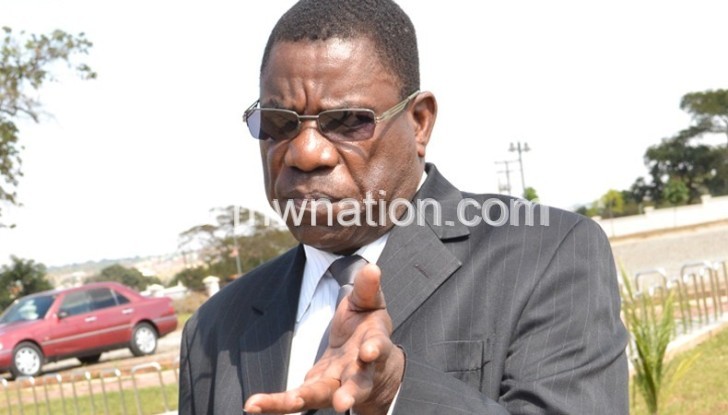Fury over banks’ greed
- Customers feel short-changed on deposit, lending rates disparity
Not good enough! That is the general reaction on commercial banks’ gesture yesterday to reduce their lending rates from 31.5 percent to 27.5 percent in reaction to the recent Reserve Bank of Malawi (RBM) four percentage points cut in the policy rate.

National Bank of Malawi (NBM) plc and FDH Bank yesterday set the pace in responding to the RBM cut in the policy rate—the rate at which the commercial banks borrow money from the central bank—from 22 percent to 18 percent.
NBM plc and FDH Bank have put their base lending rates at 27.5 percent, a development some commentators argue creates a wide margin between deposits and borrowing rates.
In an interview yesterday, former RBM Governor Perks Ligoya told The Nation that banks can do more than what is currently on paper.
He observed that the spread between depositors’ rate and interest rate on lending “is just too much and a detriment to the economy”.
Said Ligoya: “The RBM provides a policy rate and it is expected that all banks should follow suit. But in Malawi, we have the highest spread between the deposit rate and lending rate. Banks of good strategy should be working towards further reduction of interest rates.
“To service a debt at about 27 percent or there about, is just not practical. It is only a few businesses that can achieve such sort of internal rate of return.”
On his part, Consumers Association of Malawi (Cama) executive director John Kapito wondered why banks were not willing to balance the margin between depositors and lenders. He said the margin is too wide.
He said: “Money from banks comes from consumers who are depositors, but the depositor is getting the money at seven percent while the bank is selling the same product at 27 percent. This is insane!

“What we are also worried about are the extra charges that banks put on top of the lending rates and sometimes go above what is on paper. Other than that, the banks borrow at 18 percent, but are coming up with a charge of 27 percent or thereabouts and we do not know the composition of other figures.”
While commending banks for positively responding to the policy rate cut by reducing lending rates, Economic Empowerment Action Group (Eeag) president Lewis Chiwalo said his group holds the view that banks should make a further reduction in the lending rates.
Parliament’s Budget and Finance Committee chairperson Rhino Chiphiko said Parliament is concerned that the spread is too high, a situation which needs the intervention of the regulator, RBM.
He said: “At nine percentage points spread, it is just too much We expect something about five percentage points spread. These banks lend money to premium account holders at the same rate as the policy rate while for small businesses who are considered high risk customers, they add 10 percentage points.
“These banks pay peanuts in rates to savings account holders in the region of seven or eight percent and this explains why we have very few people saving in the banks because most of them don’t see the benefit of it.”
Chiphiko said his committee plans to meet RBM Governor Dalitso Kabambe this Thursday where members will raise concerns on why the regulator is allowing the banks to behave in a manner tantamount to milking customers through high rates.
But Malawi Confederation of Chambers of Commerce and Industry (MCCCI) chief executive officer Chancellor Kaferapanjira said although interest rates remain high, the direction at which things are moving to is encouraging.
He said: “What is more important to us is that the adjustment is proportionate to the reduction in the bank rate. We see that banks have complied.”
But last week Kaferapanjira said they would push the RBM to put a cap on interest rates to ensure the lending rates are in line with the policy rate.
Catholic University head of economics Gilbert Kachamba said the spread is justifiable as the banks have a duty to control the inflationary pressure on the economy.
“The cost of borrowing will go down but this will be good for those who will be borrowing for investment and not for those borrowing for consumption. Malawians have to take this opportunity for investment and not increasing their debts because of low interest rates. The low interest rates will also boost consumption and this may affect the current account negatively as imports may rise,” he said.
In an interview yesterday, NBM head of strategy, marketing and corporate affairs Wilkins Mijiga, whose bank normally influences the rates on the market, said while adjustments in the base lending are dependent on the adjustments in policy rate, the magnitude therein is dependent on individual banks.
He said that, among other things, cost of doing business, operations and investments also determine the magnitude of the base lending rate.
Said Mijiga: “The magnitude may not be the same, but the general principle is that the rates move in the same direction as the policy rate. Because there are a lot of factors that we look into in terms of cost of doing business, cost of operations and investments in technology.”
Weighing in, RBM spokesperson Mbane Ngwira said the spread is not policy rate against the bank lending rates, but rather the deposit rate against the bank lending rate.
He clarified that the policy rate is just an indication that rates should be around that level.
Reacting to the developments, Minister of Finance, Economic Planning and Development Goodall Gondwe said it is only normal that the policy rate is much lower than the base rate in commercial banks; hence, consumers need not worry.
“That is always the case that the policy rate is much lower than the base rate so there is nothing to worry about that. As long as banks reduce their lending rates in reaction to the reduced policy rate, that is a big thing.
“We will have that reduction coming in the near future which is very good for the country,” he said.





